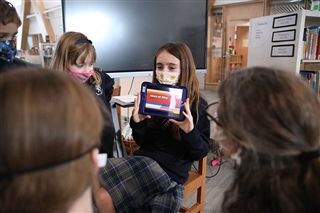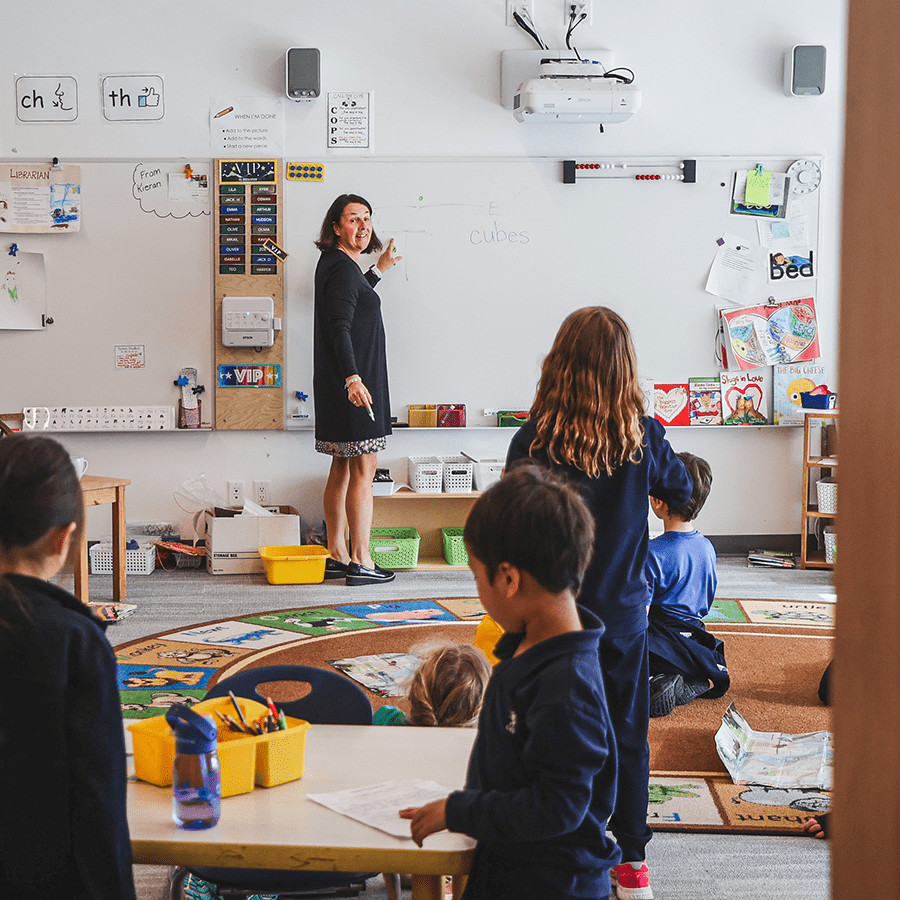The Grade 5s recently completed their IB PYP Unit of Inquiry into “Where We Are in Place and Time.” Students specifically looked into the central idea of “Human Migration is a Response to Circumstance and Challenge.”
Throughout their inquiry, the Grade 5s had special guests speak to them about migration from different countries where they spoke about their different perspectives of migration including war, business opportunities and more. This gave the students a sense of where people come from and the complexity of the world.
For their summative, students used their creativity to showcase their research into a particular aspect of migration that would tell a story through a fictional character’s eyes. Throughout the process, they used the Design Cycle (Ask, Imagine, Plan, Create and Improve). To showcase their hard work, students presented their projects to their peers in a summative walk-around.
Kate, who chose to do her research and project on the Underground Railroad, presented her findings in the form of a diary.
“My diary is about a 16-year-old girl named Laura, and her friend Ellen going on a journey of the Underground Railroad,” she explained. “I also made a large map, which shows the journey they took. In my diary, I created 10 entries about their journey and talked about some of the dangerous things that were happening. But, they ended up in Canada and started a chocolate factory.”
Jaxon decided to create a model out of playdough which was descriptive of the American Revolution of Loyalists vs. Patriots.
“I chose this because I had heard the word patriots before from the football team, and I also found the named loyalist interesting, and I wanted to know how the United States of America was formed,” said Jaxon.
Having done a lot of research on the topic, Jaxon learned some cool facts.
“The neatest fact I learned throughout my project was probably that the leader of the patriots was George Washington and the leader of the loyalists was George III,” he said.
Amy created a journal for her summative about a British home child from 1891 named Elizabeth.
“British home children were kids who were taken away from their homes in the United Kingdom and were sent to Canada to work on farms,” she explained. “Many were treated very badly, some didn’t make it and very few had good experiences.”
Choosing this topic was an easy one for Amy because she noted both her parents are British so she felt a connection.
“I wanted to learn the difference in our stories from theirs to mine, so that’s why I wanted to choose it,” she said.
Sophie created a model that represented Acadian farm landscapes. She wanted to research the Acadians because, in Grade 4, she remembered a unit they did on the fur trade, which she thought was interesting. When she found out Acadians were fur traders she wanted to learn more.
“One neat fact I learned was that Acadians have been around for over 400 years, and I think that’s kind of cool,” she said. “At first I didn’t know where the British shipped the Acadians off to, so I also wanted to find that too.”
The model Sophie created included vegetables, a barn, and a sheep. Reflecting on her summative she felt that if there was something she could change it would be smaller things within her model.
“It was fun, I really like making models,” she added.
Other projects from students included writing songs, performing a dance, creating comics and making clay animation.





